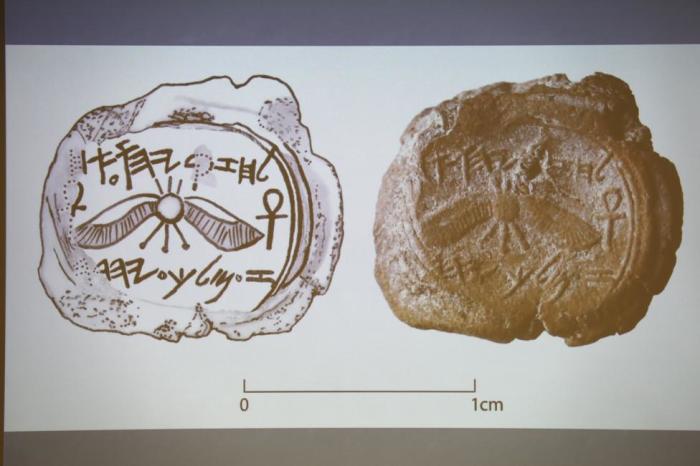Biblical King Hezekiah's Mark Found in 2,700-Year-Old Clay

Archaeologists have said that they have found the seal of the ancient biblical figure Hezekiah, one of the kings of Judah, in a 2,700-year-old piece of clay.
Eilat Mazar, the excavation leader, said at a press conference in Israel on Wednesday that the seal is of the eighth century BCE Judean leader, The Times of Israel reported.
Mazar said the artifact is "the closest as ever that we can get to something that was most likely held by King Hezekiah himself."
The artifact, or the bulla, was used to seal a papyrus scroll and an impression of the fibers was preserved on the inverse.
BBC News noted that the team from the Hebew University of Jerusalem discovered the bulla at an ancient dump next to Jerusalem's Old City.
The artifact is believed to have been thrown out alongside other rubbish.
Hezekiah is mentioned in the Bible in the book of 2 Kings 18:5, which states that he "trusted in the LORD, the God of Israel. There was no one like him among all the kings of Judah, either before him or after him."
He is thought to have ruled the kingdom of Judah between 715 and 686 BCE.
Several events are described concerning Hezekiah's time, and according to biblical narrative, he ordered the excavation of a water channel to bring water from the Siloam Spring into the city, and foil the siege by the army of King Sennacherib on Jerusalem, then of the Assyrian Empire.
The unearthed centimeter-long artifact also contained Egyptian motifs, such as a winged sun disk and an ankh, symbol of life.
Mazar explained that "the Egyptian motifs were spread over the second millennium BCE all over the region" but no longer bore their original significance, instead being used as symbols to worship the God of the Bible.
The bulla was originally discovered back in 2009, but was stored away after researchers failed to establish its origin. It was only recently that the Hebrew University team discovered its meaning, using a magnifying glass on the dots in between some of the lettering, discerning that it read: "Belonging to Hezekiah (son of) Ahaz king of Judah."
Mazar added: "This is the first time that a seal impression of an Israelite or Judean king has ever come to light in a scientific archaeological excavation."
While she said that other seals bearing the name of Hezekiah exist on the antiquities market, none of them have come from an actual archaeological excavation, which makes the latest discovery unique.
The archeologist added that the find sheds light on the reality behind biblical stories.
"It's always a question, what are the real facts behind the biblical stories," Mazar said, according to Reuters. "Here we have a chance to get as close as possible to the person himself, to the king himself."





























